Market
India’s Art Market Is Poised for Liftoff—But Haven’t We Heard That Before?
The backdrop is healthy, but experts agree there are no shortcuts to building meaningful trade.
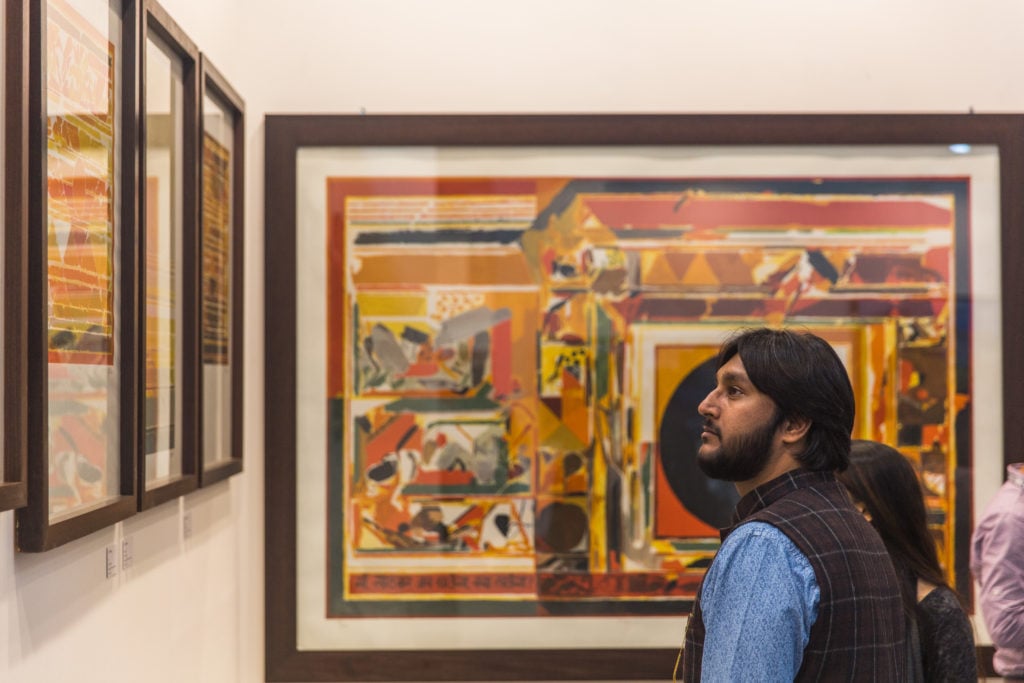
The backdrop is healthy, but experts agree there are no shortcuts to building meaningful trade.

Just over a decade ago, the International Herald Tribune published an article with the triumphant headline, “India’s art market booming.” The boom, however, didn’t last, and the market deflated following the financial crisis.
Fast forward to 2018: Similar stories on the rising Indian market have begun to surface again. But is the country’s art trade really in a more stable position for long-term success today than it was in 2007? Depends on who you ask.
Last week, the tenth edition of the India Art Fair—in which Art Basel’s owners, MCH Group, bought a majority stake in 2016—generated local and international plaudits. “The fair was dynamic and sales were good across the board for me and many of my gallery colleagues in India,” Mortimer Chatterjee, co-founder of Mumbai’s Chatterjee & Lal, tells artnet News.
Overseas galleries also fared well—Madrid’s Sabrina Amrani nearly sold out its booth of works by Timothy Hyunsoo Lee, while newcomer David Zwirner gallery reported its first sale of a work by Oscar Murillo to a Mumbai-based collector.
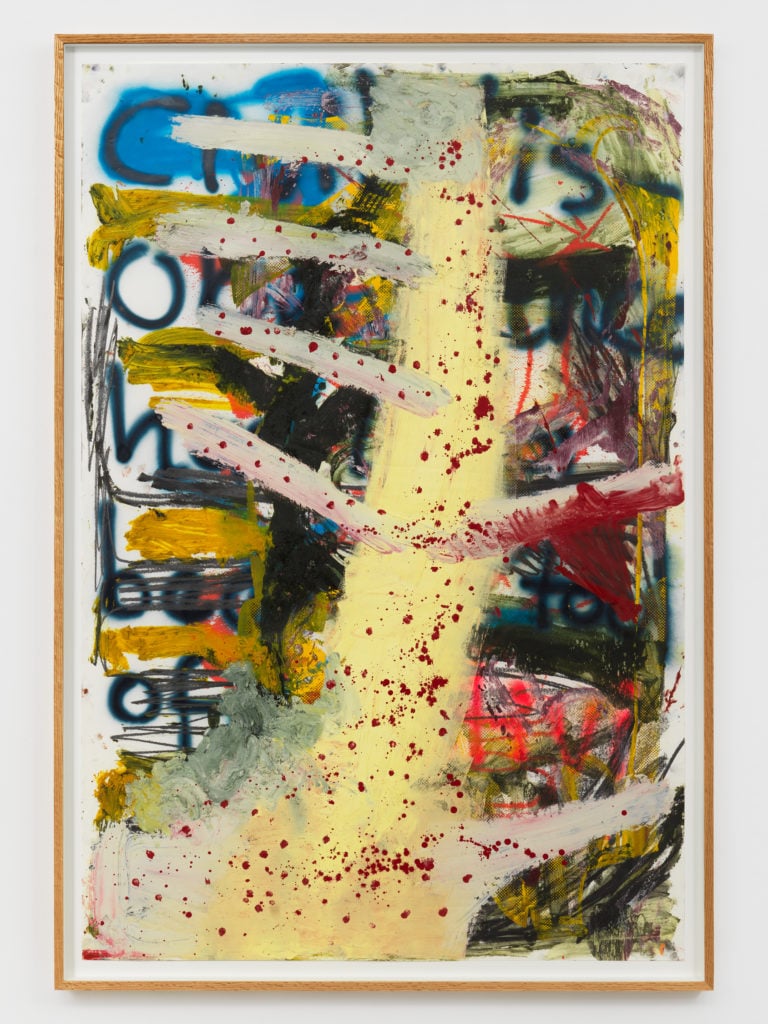
Oscar Murillo’s Manifestation of Loss, 13 (2017). © Oscar Murillo. Courtesy the artist and David Zwirner, New York/London/Hong Kong.
Meanwhile, earlier this month, ArtTactic surveyed 63 South Asian galleries (48 from India). Sixty-two percent of the Indian galleries reported an increase in sales last year, with expectations high for this year.
Such good vibes come despite the government’s dramatic demonitization effort, implemented overnight at the end of 2016 to fight India’s informal, cash-based salary system. This spread uncertainty, took two of the largest denomination bank notes out of circulation, and is estimated to have wiped two percent from the country’s Gross Domestic Product. A new Goods and Services Tax also disrupted business last year.
India’s wider economy began to improve in the last quarter of 2017, fuelling optimism in the art market. According to a notice published by ABN Amro Bank in January, researchers anticipate the country will become “the fastest growing giant again.” They expect the country’s economy to experience 7.5 percent growth between March 2018 and 2019, compared to slower forecasts for China (at 6.5 percent).
But haven’t we heard this before? Ahead of the global financial crash that began in earnest in 2008, India was highlighted as one of the so-called “BRIC” (Brazil, Russia, India, China) countries experiencing rapid economic growth—with accompanying high expectations for its cultural scene.
Then came the crash and India’s art market enthusiasts, of a much more speculative mind than others around the world, quickly pulled out of their falling stocks. And while major galleries like White Cube and David Zwirner have since opened outposts in China, and, to a lesser extent, Brazil, India has remained largely uncharted territory for international heavyweights.
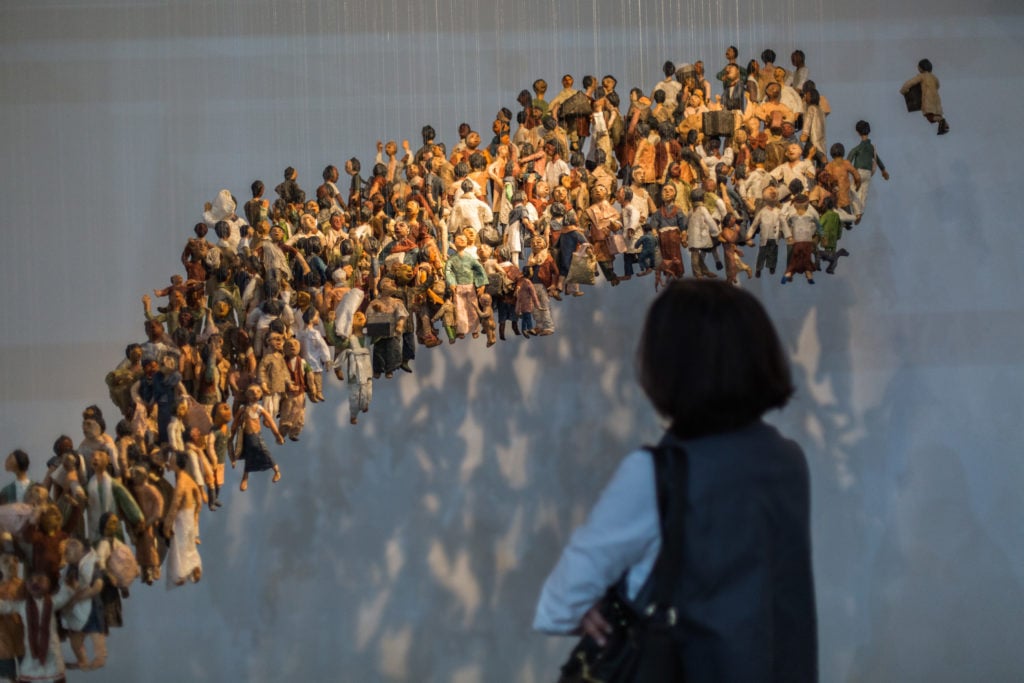
Sudipta Das’s installation A Soaring to Nowhere (2018). Photo: © Andy Barnham 2018. Courtesy of the artist and Gallery Latitude 28.
“If the Indian art market really is coming back, it’s taking a heck of a long time,” says London dealer Peter Osborne, who started working with India’s galleries and collectors 12 years ago.
Others, however, see healthier signs this time around. Chatterjee says that collectors’ approaches are different now than when his gallery started out in 2003. “People aren’t being told that art is an alternative asset class anymore; there are no longer weekly graphs of an artist’s performance in our newspapers, for example,” he notes. (Indeed, back then, speculation was so widespread that, as Georgina Adam wrote in her 2014 book Big Bucks, stock exchange trading in India would actually slow down during local online art auctions.)
Meanwhile, some note that a new generation of collectors has emerged with a healthy mindset not warped by the last art-market boom. Art adviser Arianne Piper, who has been visiting India since 2006, notes that “a lot of the collectors in their 30s today were only in their 20s then and not ready to collect.”
While India’s cultural sector still lacks a critical mass of major institutions, Piper and others point to non-commercial events launched since 2009, including the Kochi-Muziris and Pune biennials and the Serendipity Arts Festival in Goa, as signs that the scene’s infrastructure is growing stronger.
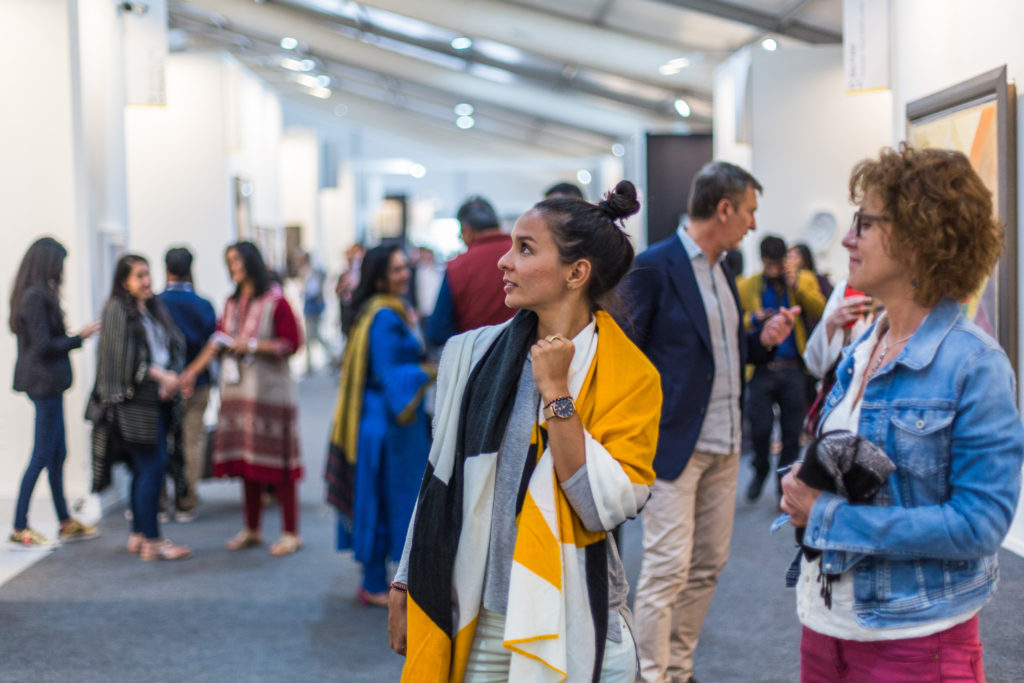
The India Art Fair 2018. © Andy Barnham.
Certainly the numbers show that the auction market is recovering from its recession crater, despite a stuttering 2017. Figures on South Asian (primarily Indian) art’s performance worldwide, compiled by local auction pioneer Saffronart, show sales peaked at $144 million in 2006 and were at a similar level in 2008 before crashing to $47 million in 2009. Last year’s sales showed considerable improvement from that low point, coming in at $88.7 million. (Saffronart accounted for $23.5 million of that total, adds vice president Abha Housego.)
The bulk of these sales are generated by India’s established Modern Masters—such as Francis Newton Souza, M.F. Husain, and S. H. Raza—whose major works also sell well outside of India. (Christie’s stopped its annual live auctions in Mumbai last year; Sotheby’s has an office in Mumbai but doesn’t hold standalone sales there.) The overseas markets for these artists are buoyed by the powerful, Non-Resident Indian communities in trading hubs such as New York and London.
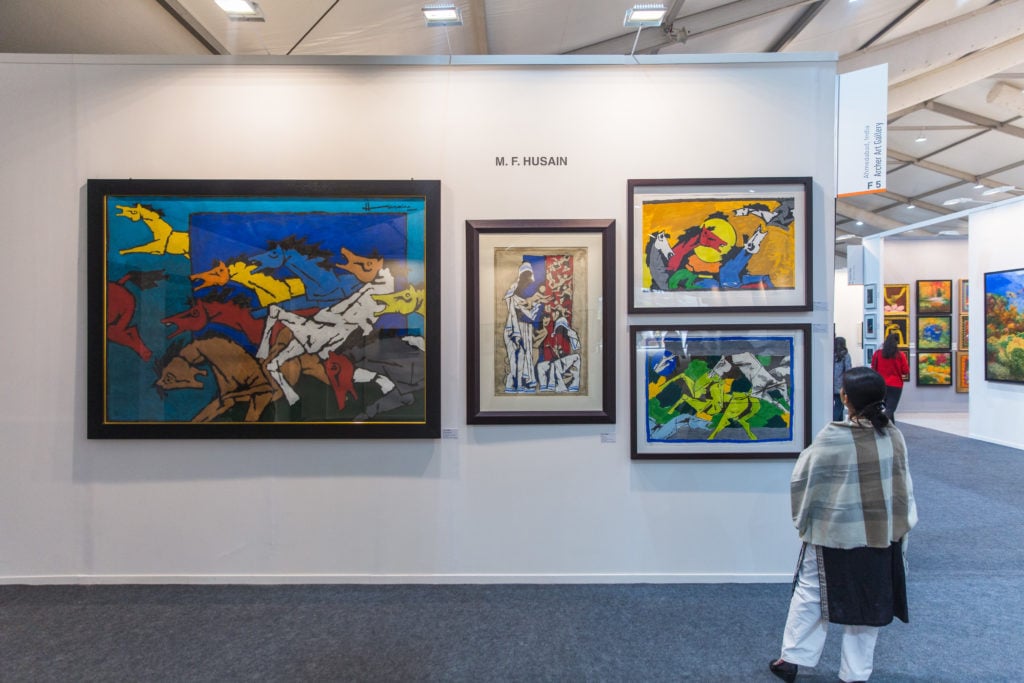
Installation view of Archer Art Gallery at the India Art Fair. © Andy Barnham.
Another sign that India’s art market boom might not be a flash in the pan is the growing number of international museum shows of work by artists from the region. In its first two years, New York’s Met Breuer mounted as many solo shows of Indian artists (Raghubir Singh and Nasreen Mohamedi). In 2016, London’s Tate Modern had a solo show of Bhupen Khakhar, whose work fetched a record £1.1 million at a sale of the late Howard Hodgkin’s collection last year.
Closer to home, India’s art traders are bullish about an enthusiastic mass market of potentially younger buyers who are embracing technology at breakneck speed. One of the biggest success stories has been StoryLTD, an online-only, fixed-price, or no-reserve e-commerce offering that Saffronart launched in 2012 as a way to meet the challenges of the global economic recession.
Its art is accessible—price points average around $3,000 and categories include jewelry, crafts, and books as well as art—and, Housego says, buyer numbers grew 235 percent between 2013 and 2017. Their data show that 45 percent of StoryLTD’s visitors are between 25 and 44 years old, and 54 percent are women.
Locals emphasize, however, that there is no shortcut to building a more meaningful contemporary art market. “The commercial scene in Mumbai only really had critical mass from about 2000, and even then we’re talking around a dozen galleries for a population of about 20 million,” Chatterjee says. “It’s not reasonable to imagine that you can just go online or have a pop-up show and make it work.”
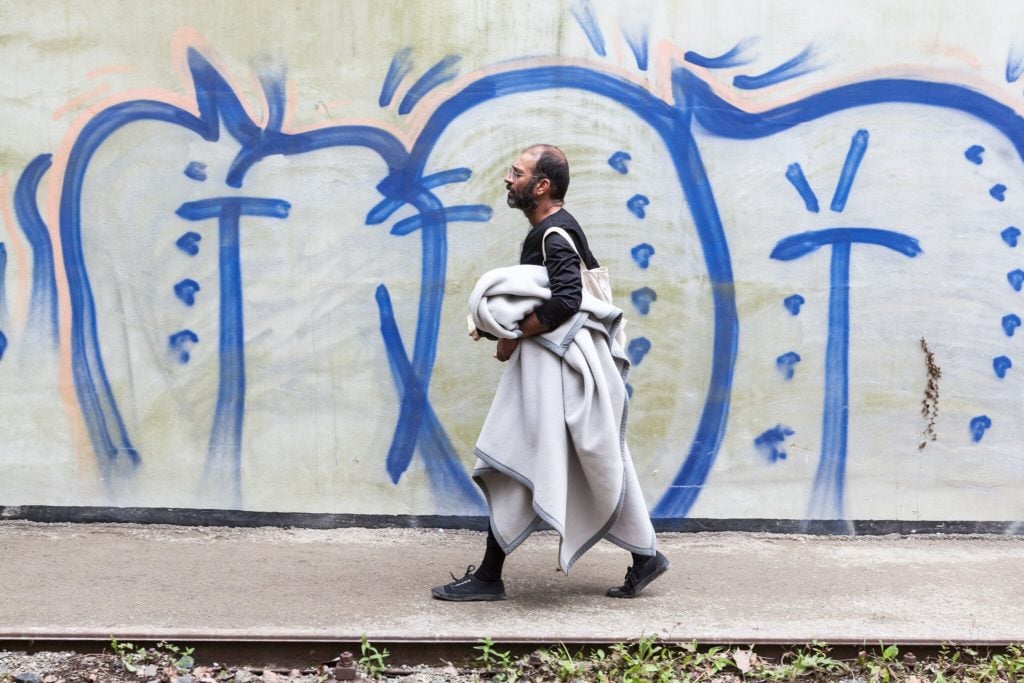
Nikhil Chopra’s Drawing A Line Through Landscape (2014) at documenta. Photo: Ilan Zarantonello. Courtesy of the artist and Chatterjee & Lal and Galleria Continua.
He says potential buyers from India need exposure to global art events, even just to have confidence to support their own country’s artists. He cites one of the artists he represents, the Calcutta-born Nikhil Chopra, who participated in the 53rd Venice Biennale in 2009 and in documenta 14 last year. “He is one of the most visible artists on the scene but is barely noticeable at auction—that’s not the whole story,” he says.
So despite the hype, Chatterjee takes today’s temperature with caution. “It’s early days,” he says, “but certainly there’s an appetite amongst collectors that perhaps wasn’t there before.”